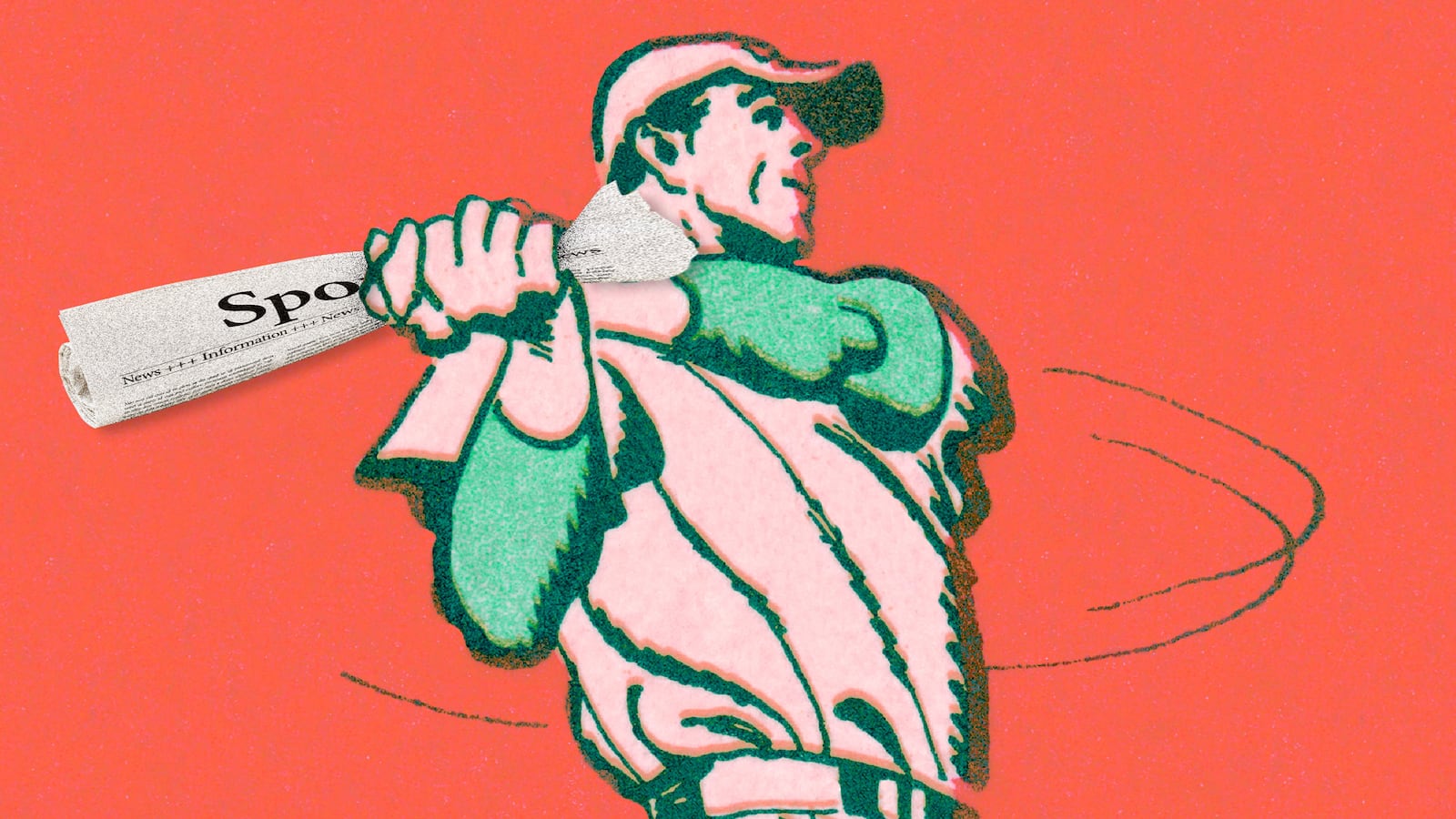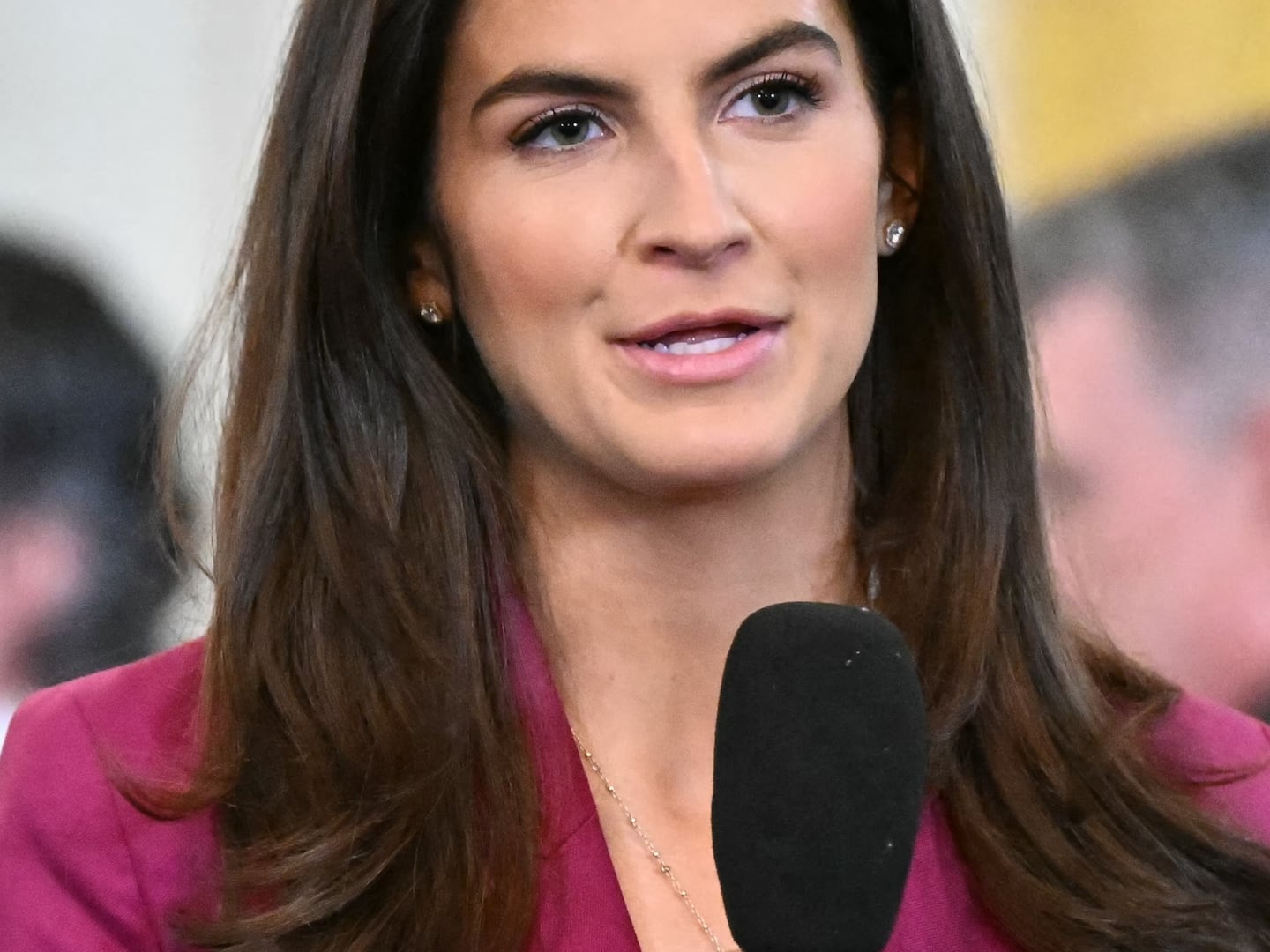Back in the days before the internet, before sports talk radio, and before Stephen A. Smith, Keith Olbermann, and Howard Cosell on TV, the newspaper columnist reigned supreme in the sports world. We picked up the paper to get the lowdown, to be informed, sure, but also to be entertained. We bought the paper for Jimmy Cannon or Tom Boswell. The sports columnist told us what happened in a game but also gave us behind-the-scenes dirt that you couldn’t get anywhere else. The best of them held forth with style, attitude, and the uncanny ability to write well under pressure.
The 20th century is rich with memorable columnists: Red Smith, Jim Murray, and Sally Jenkins are just three who are featured in the tasty new Library of America sports anthology, The Great American Sports Page: A Century of Classic Columns from Ring Lardner to Sally Jenkins. This is the third sports title edited by John Schulian for LOA (Football; At the Fights, co-edited with George Kimball). Schulian made his name as a sports columnist in Chicago in the late ’70s, early ’80s and he brings a balanced, custodial rigor to his duties.
This collection takes us from the pioneering days of Ring Lardner and Grantland Rice through the mid-century titans W.C. Heinz, Joe Palmer, and Dick Young; digs deep into Schulian’s generation who came of age in the mid-’70s led by Diane Shah, Leigh Montville, Tony Kornheiser, Mike Lupica, Bob Ryan, Larry Merchant, and Dave Kindred, and also features the talents of Jane Leavy, Ralph Wiley, Michael Wilbon, and Joe Posnanski. Schulian also includes easily overlooked regional writers like Peter Finney, Emmett Watson, and Wells Twombly in addition to the usual heavyweights—Ring Lardner, Grantland Rice, and Jimmy Cannon.
We sat down with Schulian recently and talked about the glory days of the sports columnists and the challenges he faced putting together this anthology.—Alex Belth
The Daily Beast: It’s almost hard to remember a time when the newspaper sports columnist was a big deal, even though it wasn’t that long ago.
John Schulian: At most American newspapers for most of the 20th century, the sports columnist was the rock on which the sports page was built. You didn’t even have to read what he–until the '80s it was always a he–wrote to understand his prominence. His byline was in larger type than anyone else’s, and no other sports writers had their pictures next to their bylines or their deathless prose set two columns wide and stripped down the side of the page. The sports columnist might even carry the title of sports editor, but that was almost always an honorific. If he had any sense, he didn’t want anything to do with making a million decisions a day, hiring or firing, doling out assignments, dealing with management or, worst of all, listening to writers bitch. Those were chores for the brave soul who was most often called the executive sports editor, and as far as the sports columnist was concerned, he was welcome to them.
The sports columnist had a better time by far, no matter what era he worked in. He got the choice assignments, always seemed to be traveling somewhere, wrote about what he wanted to, had a forum for spouting his opinions, set his own hours, didn’t always have to buy his own drinks, might even be a bit of a celebrity, and, if he really cared about the words that appeared under his byline, enjoyed the kind of stylistic freedom rarely given writers in any other department of the newspaper. Whether you were in New York or the most rabid college town on the planet (hello, Tuscaloosa), at large papers and small, he was the voice of the sports page whether you agreed with him or not. There was no sports talk radio, no ESPN, no blogs or podcasts, or any of the other things that now set the agenda for sports fans. If you wanted to chew on a trade or a firing or the home team’s chances in the big game Saturday, you turned to the sports columnist to see what he thought
I thought it was interesting that you started the book with W.O. McGeehan, whose feels more modern than say, Grantland Rice.
More than any other old-timer in the book, W.O. (for William O’Connell) McGeehan wrote with a verve and sensibility that seem modern. Not to demean Lardner and Runyon, but even in their prime, such giants weren’t writing about the triumphs of women athletes and the heart and heartlessness that make boxing such a perplexing sport. McGeehan was. His column was stylish and rapier-witted, kept games in perspective, and sometimes even held them in contempt, which must have driven the hero-worshipping Rice crazy. I like to think McGeehan’s aw-nuts approach was the result of his days covering hard news and serving as managing editor of the San Francisco Bulletin. He knew the difference between losing a game and dying in a shanty town fire. When he moved to New York to write sports in the '20s, he quickly established his disdain for doltish athletes and scored points with the literary set by satirizing Macbeth. It was obvious McGeehan could do anything on a newspaper from covering the Scopes trial to rolling his own cigarettes. And yet his career came to an unhappy end because of the same curse that foiled many another scribe: booze.
Newspaper anthologies can lean heavily on the New York writers, and writers from the Midwest are sometimes neglected or overlooked. Was that something you were aware of wanting to correct?
Foremost among the forgotten or neglected were Sandy Grady and Wells Twombly, who were incredible stylists and would have been great role models for me if I’d had more chances to read more of them. Grady’s sports writing shined brightest in the '60s when he was a columnist for the Philadelphia Bulletin. To hear the young scribes who worked with him in what was a great sports writing town, guys like Ray Didinger and Alan Richman, he was the second coming of Red Smith, except he knew who the Beatles were. When athletes started changing–and not for the better–he walked away from sports and became a Washington columnist for Philly’s Daily News. It was a much less dramatic departure than the one Twombly made by dying in 1977 in the prime of his career. He’d become a star at the San Francisco Examiner after bouncing from paper to paper around the country. His columns ranged from literary and ornate to contrarian and bombastic. Sacred cows ran like scalded dogs when Twombly got them in his sights. He could be over-the-top, but that was part of his appeal, too, because he worked without a net.
Peter Finney was every bit as revered by readers of the various New Orleans papers he served for 68 years (think of that for a moment) with a smile and a graceful way with a sentence. In a town where the passion runs as high for sports as it does crawfish etouffee, he was a voice of reason and the source of much-needed smiles when things went bad–and, brother, you haven’t seen bad unless you saw the Saints in the '70s. For my purposes, Finney also served to represent the gentleman columnists who have toiled in the South over the years, from Nashville’s Fred Russell to Miami’s Edwin Pope. This collection wouldn’t have been complete without one of them.
Nor would it unless I stumbled years ago across a column by Emmett Watson that the great W.C. Heinz included in his original Fireside Book of Boxing. The column–“End of the Line for Leo”–captures the moment when an old fight guy delivers the bad news about a young boxer’s career. It’s a tender moment in a harsh sport, and Watson wrote about it for the Seattle Post Intelligencer with such understated power and attention to detail that it feels as though you’re reading a short story by one of masters. Watson went on to become a Seattle institution as a three-dot general interest columnist, but what he left behind on the sports page was a piece that deserves to be read again and again, and then handed down to the next generation.
There are only three columns by women in this book. Women weren’t allowed into the locker rooms until the late ’70s, and yet there have been more than three good women sports writers. Can you talk about some of them?
Diane Shah, Jane Leavy, and Sally Jenkins weren’t the first women to enter the press box, although it must sometimes seem that way, particularly in relation to the anthology I’ve put together. Each was smart, competitive, resourceful and empathetic in addition to being hugely talented. But in 1944, before any of them was born, a young reporter named Mary Garber was transferred out of the society page at the Winston-Salem Journal in North Carolina. The men in the paper’s sports department had been called to serve in World War II, so she was thrown into the breach. Other women had written sports before–Nellie Bly, the indefatigable Pulitzer news hen, even gave it a brief whirl–but Garber threw herself into the job for 62 years. If you want to trace the evolution of women sports writers in the U.S., you start with her. She was the first.
Her prose wasn’t memorable enough to earn her a place in the book, but Garber proved that women were as capable as men when it came to winning the daily battle with deadlines. She was a true professional capable of covering football and basketball in the colleges and high schools, and minor league baseball, and anything else her editors threw at her. And her commitment to getting the facts straight helped the women who followed her into a business that could frustrate and humiliate even the most hard-bitten guys. The coaches who came to respect her made sure their athletes sat still for interviews after they had showered and dressed. It seems to me that every woman who has written sports in the years since owes a debt to Garber.
They might also want to think good thoughts about Melissa Ludtke of Sports Illustrated, who in the '70s filed suit against Major League Baseball and gained access to locker rooms for women reporters. Ludtke’s victory turned out to be a mixed blessing, and maybe that’s all it could be. Hell, even men don’t enjoy those post-game locker room scrums. Women certainly deserved the right to go everywhere their male competitors went, but in way too many instances, ballplayers treated them terribly. Jennifer Briggs, who covered the Texas Rangers, wrote a compelling but painful account of her experiences for the Dallas Observer that should be required reading for any woman considering sports writing as a career. The parents of any woman dating a ballplayer might want to give it a look, too.
But once the old barriers had fallen, women came streaming into the press box, and the best thing about them was this: They weren’t men. They had none of the been-there-done-that attitude that infected more than one sports department or traveling band of beat writers. The best of the women embraced the work whether they were covering the World Series or a high school tennis tournament. They brought a freshness to their questions and the way they approached stories, and they cared more about their subjects, both male and female, as human beings than they did about the scores. Best of all, they didn’t smoke cigars.
Through no fault of their own, women didn’t make an impact on the sports page until the last century’s last quarter, so there are only three of them in the book. Two–Jane Leavy and Sally Jenkins–worked on the Washington Post, which might seem disproportionate when you consider the terrific women who worked in New York, Miami, Detroit, Dallas, Boston, L.A., and San Francisco. But the Post seemed to be the most aggressive and open-minded about hiring women and letting them fly as high as their wings could take them. In 2018 all of the paper’s major sports beats were covered by women. You can trace that kind of progressive thinking back to George Solomon, the paper’s relentless (and I mean that in a good way) former assistant managing editor for sports.
For most of the 20th century, you didn’t see a lot of star African-American columnists. Yes, there were the giants from the black press, Sam Lacy and Wendell Smith, and you’ve also included Ralph Wiley and Michael Wilbon, too but can you talk about the challenges you faced selecting pieces by African-American columnists?
It wasn’t as though African American sports writers suddenly appeared when white newspapers decided they’d better put their money where their mouths were and start hiring some. Long before that day arrived, there were vigorous black newspapers all across the country, just as there were black neighborhoods and restaurants and banks and department stores and radio stations and everything else that so much of white America didn’t think possible. And those African-American newspapers had sports sections that were built on the names of their star columnists. There was Sam Lacey in Baltimore and Halley Harding in Los Angeles, both of whom had big followings and enormous clout, but the black columnist I thought represented that mid-century era of transition best was Wendell Smith, who was both sports editor and star columnist of the Pittsburgh Courier. When Jackie Robinson was living the most important sports story of the 20th century–and one of the most important stories, period–Smith did more than just report it. He lived it. He became Robinson’s friend, confidante, and sounding board. I’m not saying Robinson wouldn’t have survived without him, but Smith was indeed a vital figure in the breaking of baseball’s color line.
Then there are the stars who emerged from the infusion of African-American talent. I like to think the two with the most candlepower were Michael Wilbon of the Washington Post and Ralph Wiley of the Oakland Tribune, two very successful columnists with very different styles. Wiley, who died much too young in 2004, had a harder edge to his prose yet managed to be almost philosophical whether the subject was boxing, baseball, or basketball. Wilbon wrote like he was in love with the language even when he was tangling with the always perplexing subject of race. He could surprise, anger, or sometimes just force readers to think. Of course he doesn’t do that in print anymore because he now works for ESPN. Wiley, on the other hand, left journalism to write passionate, challenging books about race in America. The sports page, alas, wasn’t big enough to hold them. But that sort of thing happened when the business was a white bastion, too. Even though they are missed on the sports page, to see two star African-American columnists stretching in new directions is an undeniable sign of progress.
It’s an unfair question but a sports fan question. If you had to name just one, what’s your pick for the greatest sports section ever?
The best sports section ever? After considerable thought and with no small amount of trepidation, it was the New York Herald Tribune in the years immediately after World War II. You start with the nonpareil Red Smith, freed from the baseball beat work he’d had to do in Philadelphia and St. Louis so he could concentrate solely on his column. He’s in the book, of course, as is his great discovery, Joe Palmer, the reformed English professor who wrote so beautifully about horse racing that people who wouldn’t go near the track read him religiously. They were surrounded by beat writers who put a premium on high-gloss prose and led by Stanley Woodward, a brilliant, cantankerous sports editor who also wrote a wicked-good column. Woodward almost pulled off an historic coup by hiring Newsweek’s hilarious John Lardner, son of the equally hilarious but quite different Ring Lardner, as a columnist to pair with Smith. It would have been like having Babe Ruth and Willie Mays in the same outfield.






